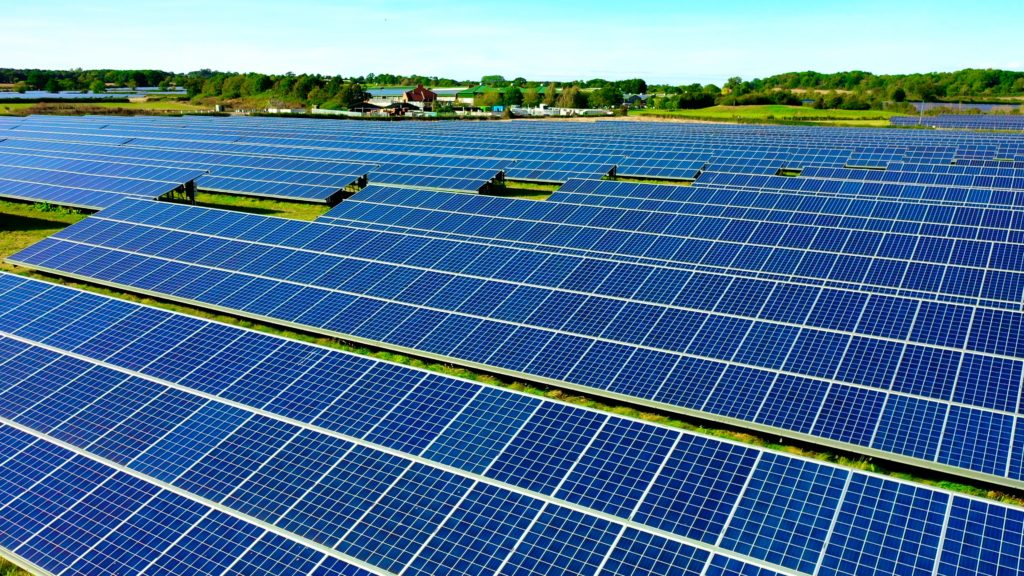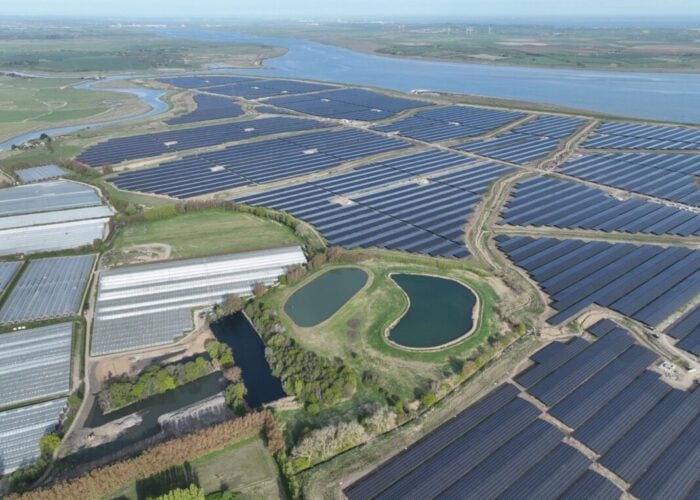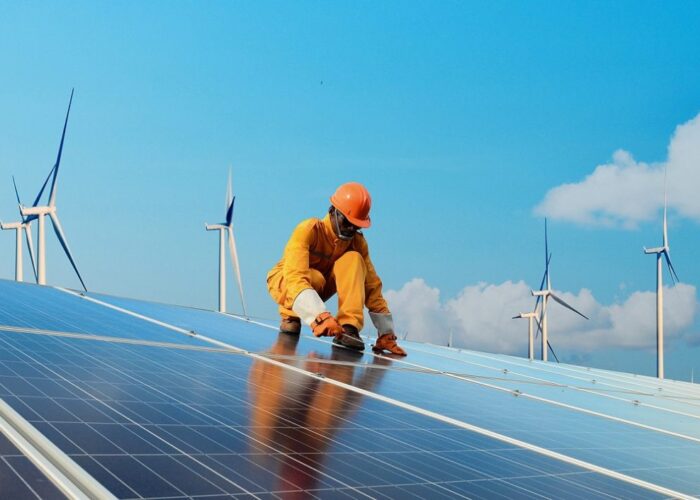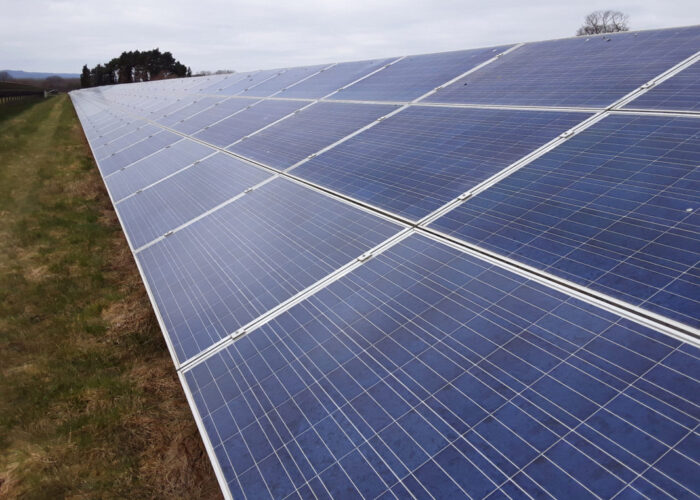
With tens of gigawatts of solar just waiting to be deployed, the UK solar market looks set to return to gigawatt-scale deployment. But with grid constraints listed as the biggest obstacle in both the short- and medium-term, Liam Stoker learns what, exactly, the problem is.
After years in the relative solar PV wilderness, the UK looks set to return to the gigawatt-scale market stakes from 2022. A burgeoning pipeline that spans tens of gigawatts or projects is being ably supported by newly-regular government-backed auctions and a national energy security strategy that has set the expectation for a five-fold increase in capacity by 2035.
Unlock unlimited access for 12 whole months of distinctive global analysis
Photovoltaics International is now included.
- Regular insight and analysis of the industry’s biggest developments
- In-depth interviews with the industry’s leading figures
- Unlimited digital access to the PV Tech Power journal catalogue
- Unlimited digital access to the Photovoltaics International journal catalogue
- Access to more than 1,000 technical papers
- Discounts on Solar Media’s portfolio of events, in-person and virtual
Back in the UK’s solar heyday of the mid-2010s, few European markets could contend with it. The country’s now-defunct Renewables Obligation mechanism supported gigawatts of utility-scale solar arrays over a mad few years that very much typified the market’s ‘Solarcoaster’ approach. Around 4GW was installed in a single year – 2015 – while the spell from 2014 – 2016 saw more than 8GW installed.
The UK Conservative party’s election win in 2015 put paid to that growth trajectory, however, with all subsidies and support mechanisms hastily aborted from September 2015. Then-Prime Minister David Cameron’s intent to “cut the green crap” from the budget was unequivocal and, save for some grace period deployment in 2016 and 2017, not a great deal of solar PV has been installed – at least on the ground – since.
All that looks set to change, however, with now-PM Boris Johnson’s British energy security strategy, unveiled in April 2022, having established the now much-vaunted expectation of a five-fold increase in the country’s capacity over the next 13 years, deployment which would see capacity reach 70GW.
With in excess of 40GW in the country’s planning pipeline and investors readying finance for projects, all would seem well. Not even Brexit – which has dented Britain’s trade relations with its nearest partners and made imports more difficult – would appear to be much of a hurdle, with most in the sector certain that supply chain constraints being felt are not worse in Britain than anywhere else in the world presently.
But the biggest obstacle to gigawatt-scale deployment is, and this will be of little surprise to any hardened developer, grid and, more specifically, grid capacity, with constraints being felt in much of the country.
The UK’s electricity system is managed by a somewhat confusing mix of regulated monopolies and government-appointed entities and regulators, a system which developers have told PV Tech needs drastic simplification if grid hurdles are to be solved.
Britain’s regional, low voltage power networks are managed and operated by six distribution network operators (DNOs), while its high-voltage, national transmission network is operated by the transmission network operator, National Grid Electricity Transmission (NGET). The system, meanwhile, is managed by the electricity system operator, National Grid ESO (NGESO). The two National Grid bodies have been legally separate since April 2019, a decision taken to remove the prospect of conflicts of interest occurring.
The majority of solar PV is connected to the distribution networks, with DNOs acting as the gatekeepers to regional grid capacity. Constraints vary from region to region and are felt particularly hard in England’s sunnier south. With a flurry of grid applications in recent months, PV Tech has learned of developers now receiving estimated grid connection dates of between 2028 and 2031, with that being the most likely timeline of when spare grid capacity will come onstream.
This has, perhaps predictably, led many developers to consider alternative approaches. Most DNOs now offer more flexible connection agreements – offering limited export capacity, for instance – in exchange for shorter lead times. DNOs are able to free up capacity in local grids flexibly under what’s been termed a regional development project, or RDP.
“There’s just no answers for the industry specifics of how do you make that target a reality… the interventions that will get us there, I think are absent.”
But some developers have connected projects to the 400kV transmission network, managed by NGET, which while requiring of sufficiently trained and qualified connection engineers, is considered a much faster route to connection. It’s not suitable for all projects however and has inadvertently created instances of queue jumping, a source of much frustration within developer circles.
Those connecting to the distribution grid are often placed into batches by DNOs, who then submit those to National Grid ESO to determine the need for any prospective reinforcement works in the local area within what’s known as a Statement of Works request. This can be a timely process and, all the while, connection agreements at the transmission level can be issued. On at least one occasion in the past year, National Grid ESO has denied immediate connection requests – despite the DNO accepting grid connection requests years prior – citing there to be limited available capacity after awarding transmission capacity in the same area.
“There’s a distortion in the DNO and National Grid interplay,” says Mark Futyan, CEO at British developer Anesco, who says the government’s recent energy strategy has been “big on targets, but light on detail”.
“There’s just no answers for the industry specifics of how do you make that target a reality… the interventions that will get us there, I think are absent,” Futyan adds.
Chris Hewett, chief executive at the country’s trade body Solar Energy UK, says grid obstacles are the biggest problem facing UK solar development in both the short- and medium-term and, in reality, are only just now appearing at the top of network operators’ interests. That much will be of considerable frustration given how UK energy regulator Ofgem and network operators only last year entered a new period of price controls which will last until 2028. Those controls, dubbed RIIO-2, effectively place a cap on the costs network operators can charge which, in turn, places an effective limit on what is invested into the networks. RIIO-2 is much more restrictive than its predecessor and DNOs have criticised the controls.
Consequently eyes have drifted towards Westminster, with Britain’s solar industry imploring the government to intervene and streamline the grid connection process. Futyan says Britain’s networks need better prioritisation with regards the actual handling of connection requests, especially against the backdrop of decarbonisation.
The most recent energy security strategy document states that consultations are to be forthcoming, with the country’s Department for Business, Energy and Industrial Strategy keen to add to the “bonfire of red tape” Boris Johnson’s government has obsessed itself with since Brexit.
With tens of gigawatts sitting in wait, time will tell whether stripping back the planning regime will ease that logjam and return Britain to the gigawatt-scale club.
A feature in the soon-to-be-published PV Tech Power volume 31 will explore the UK’s solar market in more detail.







